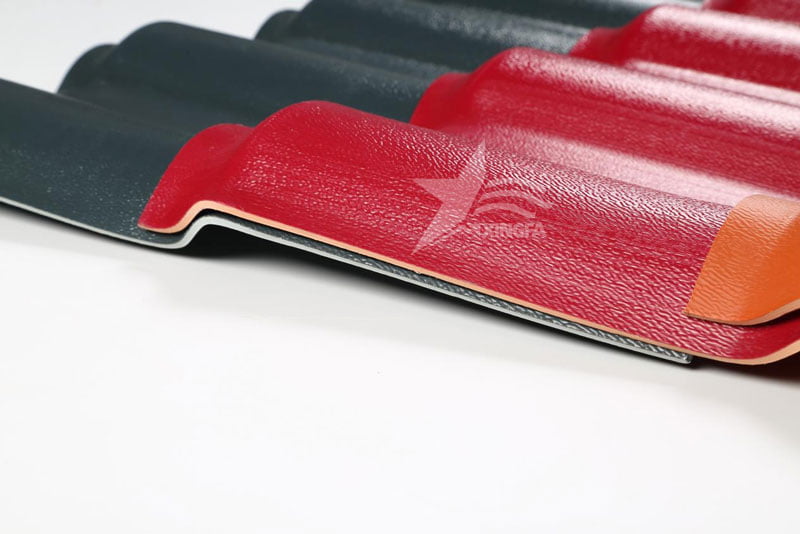In modern architecture, resin tiles have emerged as a popular new roofing material, offering unique advantages over traditional cement tiles. Today, let’s explore the differences between cement tiles and resin tiles.

Aesthetic Appeal and Durability
Resin tiles are formed under high temperatures, resulting in vibrant, long-lasting colors that significantly enhance the appearance of buildings. In contrast, cement tiles often have a more monotonous look. Resin tiles maintain their aesthetic appeal over time, adding enduring charm to structures.

Lightweight and Convenient
Compared to cement tiles, resin tiles are lighter, reducing transportation and installation costs. Their ease of use makes construction more efficient, saving labor and time.
Waterproof and Impact Resistant
Resin tiles possess inherent waterproof properties, effectively preventing rainwater penetration and enhancing the roof’s overall waterproof performance. Their robust nature allows them to withstand external impacts, increasing the roof’s durability.
Eco-friendly and Sustainable
Resin tiles align with green and eco-friendly principles, as they contain no harmful substances and reduce the consumption of natural resources. Their use in construction helps minimize environmental pollution, supporting the goals of sustainable development.

Wind, Shock, and Hail Resistance
The material properties of resin tiles confer strong resistance to wind, shocks, and hail, providing reliable protection for buildings under harsh weather conditions.
In summary, resin tiles excel in aesthetics, durability, lightness, eco-friendliness, and impact resistance, making them a superior choice over cement tiles for roofing. Choosing resin tiles not only enhances the beauty of buildings but also promotes a greener and more sustainable direction for the construction industry.











